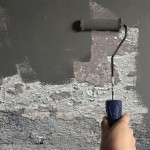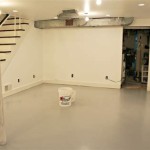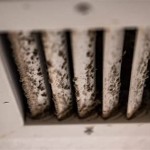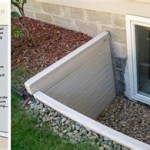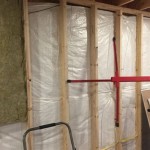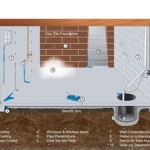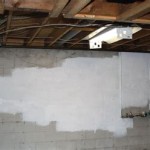How To Fix Water Leaking In Basement
Discovering water leaking in a basement is a common and often concerning issue for homeowners. Left unaddressed, basement leaks can lead to a multitude of problems, including structural damage, mold growth, decreased air quality, and loss of usable space. Understanding the potential sources of leaks and the appropriate methods for remediation is crucial for maintaining the integrity and value of a property. This article will explore potential causes of basement leaks and outline a range of solutions, empowering homeowners to address the problem effectively.
Identifying the source of the leak is the first and most critical step in the repair process. Common entry points for water include cracks in the foundation walls and floors, leaky pipes, inadequate drainage around the foundation, and issues with the home's gutter system. A thorough inspection, both inside and outside the basement, is essential for pinpointing the origin of the moisture.
Begin by examining the foundation walls for visible cracks. These cracks can range from hairline fractures to larger, more significant openings. Pay close attention to areas where the wall meets the floor, as this is a common weak point. Check around window and door frames for signs of water intrusion. Look for damp spots, water stains, or efflorescence, a white, powdery deposit left behind by evaporating water. Efflorescence indicates that water has been seeping through the wall and evaporating, leaving mineral salts behind.
Outside the house, inspect the grading around the foundation. The ground should slope away from the house to ensure that water flows away from the foundation walls. Look for areas where water may be pooling or collecting near the house. Check the condition of the gutters and downspouts. Gutters clogged with leaves and debris can cause water to overflow and saturate the ground around the foundation. Ensure that downspouts extend far enough away from the house to direct water away from the foundation. If downspouts are too short, water can pool close to the foundation and seep into the basement.
Examining the plumbing system is also essential. Inspect all exposed pipes for leaks or condensation. Check the connections between pipes and fixtures for any signs of dripping or moisture. Pay particular attention to areas near the water meter, washing machine, and hot water heater, as these are common sources of leaks. If the basement has a sump pump, verify that it is functioning correctly. A malfunctioning sump pump can allow water to accumulate in the basement, leading to leaks and flooding.
Addressing Foundation Cracks
Foundation cracks are among the most common causes of basement leaks. These cracks can form due to various factors, including soil settlement, hydrostatic pressure, and temperature fluctuations. There are several methods for repairing foundation cracks, depending on the size and severity of the crack. Small, hairline cracks can often be sealed with epoxy or polyurethane injections. These materials are injected into the crack, filling the void and creating a waterproof barrier.
For larger cracks, more extensive repairs may be necessary. One option is to use a hydraulic cement patch. Hydraulic cement is a fast-setting cement that expands as it hardens, creating a watertight seal. To repair a crack with hydraulic cement, first clean the area around the crack and remove any loose or crumbling concrete. Then, apply the hydraulic cement according to the manufacturer's instructions. Be sure to press the cement firmly into the crack to ensure a good seal.
Another option for repairing larger cracks is to use a crack injection system. These systems typically involve drilling small holes along the length of the crack and injecting a polyurethane or epoxy resin into the holes. The resin expands and fills the crack, creating a waterproof barrier. Crack injection systems can be effective for sealing even large cracks, but they may require the assistance of a professional contractor. The decision to use professional services often hinges on the complexity of the crack and the homeowner's level of comfort with the process.
Regardless of the method used, it is important to address foundation cracks promptly to prevent further water damage. Regular inspection of the foundation walls can help identify cracks early on, before they become a major problem. Addressing cracks early can prevent them from widening and causing more significant structural issues in the long run.
Improving Drainage Around the Foundation
Inadequate drainage around the foundation is another common cause of basement leaks. When water is allowed to accumulate near the foundation, it can exert hydrostatic pressure on the walls, forcing water through cracks and other openings. Improving drainage can help prevent water from pooling around the foundation and reduce the risk of leaks.
One of the most effective ways to improve drainage is to ensure that the ground slopes away from the house. The slope should be at least six inches over the first ten feet. This will allow water to flow away from the foundation and prevent it from pooling near the walls. If the ground is not properly sloped, it may be necessary to regrade the soil around the foundation. This can be done by adding soil to create a slope that directs water away from the house.
Another important aspect of drainage is the gutter system. Clogged gutters can cause water to overflow and saturate the ground around the foundation. Ensure that gutters are cleaned regularly, at least twice a year, to remove leaves, debris, and other obstructions. Downspouts should extend far enough away from the house to direct water away from the foundation. If downspouts are too short, water can pool close to the foundation and seep into the basement. Downspout extensions can be added to direct water further away from the house.
Consider installing a French drain around the perimeter of the foundation. A French drain is a trench filled with gravel that contains a perforated pipe. The pipe collects water and directs it away from the foundation. French drains can be particularly effective in areas with high water tables or poor soil drainage. The installation of a French drain typically requires excavation around the foundation, making it a more involved project. However, the long-term benefits of improved drainage can outweigh the initial effort and cost.
Managing Interior Water Intrusion
Sometimes, despite efforts to address exterior drainage and foundation cracks, water may still find its way into the basement. In these cases, interior waterproofing solutions may be necessary. Several options are available, depending on the severity of the problem. These include sealants and dehumidifiers.
Applying a waterproof sealant to the interior walls and floors of the basement can help prevent water from seeping in. There are several types of waterproof sealants available, including epoxy-based sealants, acrylic sealants, and silicate-based sealants. These sealants typically create a barrier that prevents water from penetrating the concrete. It is important to prepare the surface properly before applying a sealant. This typically involves cleaning the surface to remove any dirt, dust, or loose particles. The sealant should be applied according to the manufacturer's instructions.
A dehumidifier can help reduce the humidity level in the basement and prevent mold growth. Dehumidifiers remove moisture from the air, creating a drier environment that is less conducive to mold growth. Choose a dehumidifier that is appropriately sized for the size of the basement. The dehumidifier should be placed in a central location and emptied regularly. Maintaining a low humidity level in the basement helps prevent the growth of mold and mildew, which can contribute to health problems and structural damage.
Consider installing an interior drainage system. These systems typically involve creating a channel around the perimeter of the basement floor to collect water and direct it to a sump pump. The sump pump then pumps the water out of the basement. This approach is effective in managing water that enters the basement through the walls or floor. Interior drainage systems can be a more involved solution, often requiring professional installation, but they can provide effective long-term protection against water damage.
Regularly inspecting the basement for signs of water intrusion is crucial, even after implementing preventative measures. Early detection of water issues allows for timely intervention, minimizing potential damage and associated costs. A proactive approach to basement waterproofing is essential for maintaining a healthy and structurally sound home.

The Best Methods For Basement Leak Repair Acculevel

Get To Know How A Leaky Basement Can Ruin Your Home

How To Fix Water Leaking Into Basement After Heavy Rain Gj Macrae

5 Maintenance Tips To Prevent Basement Leaks Renco Home Improvements Foundation Repair

How To Fix And Prevent A Leaking Basement Projex

Help My Basement Leaks When It Rains News And Events For Systems Inc

Repairing Leaking Basement Walls What Works And Doesn T Work For Wall Leak Repairs

12 Tips For Fixing A Leaky Basement Family Handyman

Why Your Basement Leaks In Heavy Rain

7 Ways To Stop Rain Leaking Into Your Basement Baker S Waterproofing
Related Posts
